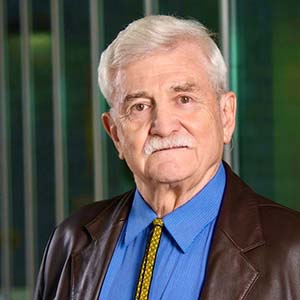In This Story

“What we learned shocked me to my core.”
That was the reaction of Schar School professor Frank T. Manheim when he and another scholar discovered long-neglected achievements by Black high school students in Kansas City from the 1950s to 1965. While Black students were dominating metropolitan Kansas City science awards—out-pacing students in white schools, their achievements were not publicized by mainstream media.
In an essay published in the Kansas City Star last month, Kansas City native Manheim, who researches environmental policy at the Schar School and for 35 years was a senior ocean and earth scientist in the U.S. Geological Survey, detailed the results of a 2005 study conducted with University of Missouri-Kansas City chemistry professor Eckhard Hellmuth. (Hellmuth died in 2019.)
The scholars had heard rumors of unacknowledged high achievements in science during the Jim Crow era at the city’s Black high schools, Lincoln High and Sumner High. Interviews with those who worked and studied at the schools led the scholars, assisted by a UMKC master’s student, David Humphreys, to uncover a legacy that had been buried for 50 years.
“The findings were that the Black high schools dominated science awards for all high schools in greater Kansas City through the 1950s and up to 1965,” Manheim wrote. “Before desegregation, schools throughout the metropolitan area were more than 80 percent white. Lincoln and Sumner were 100 percent Black.”
One example from the uncovered archives is the work of Lincoln High’s Vernice Murray, who won the 1963 Kansas City Science Pioneers fair and then became the city’s first national science award winner for her project, Experimental Methods of Verifying Force, which demonstrated that the acceleration of gravity was independent of mass and confirmed Newton’s gravitational constant.
Ironically, it was systemic racism that made these accomplishments possible. Because Black university graduates could not get jobs in the white establishment, they often found work in primary and secondary schools. Black schools, Manheim said, “often got the cream of Black talent as teachers and administrators.”
“For example,” he wrote, “Lincoln yearbooks in the Kansas City Public Library showed that many Lincoln teachers had master’s degrees, while teachers at my Southwest High School had bachelor’s degrees. In 1963, two Lincoln teachers had PhDs.” Those teachers, motivated by what lay ahead for their students, served as mentors as well as educators.
With the prejudice of the times, Manheim wrote, “I remembered clearly assuming that Kansas City’s Black schools had to be inferior to the white schools. Now I could not avoid the conclusion that, in all probability, those Black students received an educational experience superior to mine—and mine got me into Harvard.”
In this age of “race and reckoning,” Manheim believes more should be done to acknowledge the accomplishments of the Black schools and teachers.
“These schools need to be researched while graduates and other knowledgeable people remain to offer their wisdom and experiences,” he wrote. “Their legacy of excellence must not be forgotten.”
